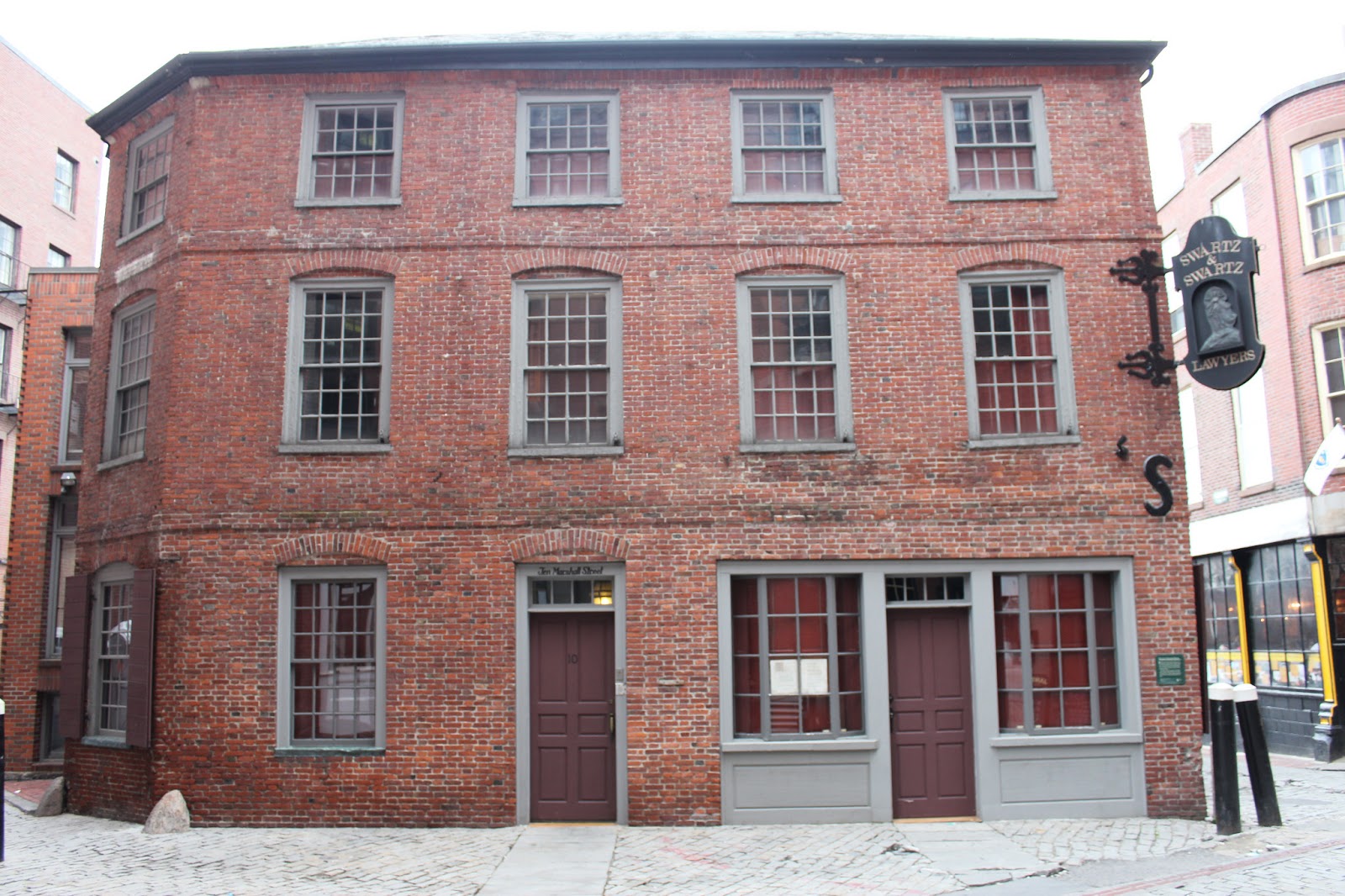THE JOHN AND EBENEZER HANCOCK HOUSE ON BOSTON’S FREEDOM TRAIL
At a time when attorneys are flocking to sleek high-rise buildings with prestigious addresses in reborn city centers, few would have opted for a rotting, deserted structure tucked away in an alley. Yet, that’s precisely what happened in the heart of historic Boston.
In 1976, Edward M. Swartz, who had worked as a child in markets in the Haymarket area, rediscovered The Hancock House which is the oldest brick building in the city. It was neglected, unoccupied and in danger of becoming permanently lost in a city heady with wrecker balls and renewal.
If John Hancock strolled down the narrow brick street today to visit his tenant and youngest brother Ebenezer, he’d find much of the house as it was 200 years ago. He would relish the unchanged imported handmade English bricks, the axe-hewn beams, the hand-wrought iron door hinges and window latches, and the warmth of the working fireplaces. And, he’d nod approvingly at the excellent renovation.
Even before the famous singer of the Declaration of Independence owned this properly, it had experienced a long and colorful life. The first Town Crier of Boston, William Courser, lived on this spot in 1660 and, late in 1737, James Davenport, the brother-in-law of Benjamin Franklin, called 10 Marshall St home.
Hancock inherited the property, along with many other holdings, in 1764 from his uncle Thomas Hancock who died that same year. Since John preferred the Hancock Mansion on Beacon Hill, he never lived at this address. Instead, the house was occupied by his “n’er-do-well” brother, Ebenezer a government commission as a deputy paymaster to the Continental Army, with a salary of $50 a month, Ebenezer used 10 Marshall St as his residence and his business address. But Ebenezer had little to do until after Benjamin Franklin negotiated a “lend-lease” agreement with the French Court of Louis XVI that secured financial assistance for the revolutionary government. This simple house took on new importance, as did Ebenezer, when two million silver crowns were transferred from a French brig by Count d’Estaing to the Marshall Street residence. Armed soldiers ringed the building to protect the cache as ragged militiamen trouped inside in single file to collect long overdue pay from Ebenezer.
After the revolution, in 1785, the house became the property of Ebenezer Frothingham, china and glass merchant who kept a shop on the ground floor. In 1796, Benjamin Fuller, the first of a series of shoe merchants, began selling boots and shoes on this site. In 1821, William H. Learnard took carried on by George H. Tarbox until as recently as 1963.
Only through foresight and laborious negotiations was this fine building saved from the fate of the Hancock Mansion on Beacon Hill which was razed for the want of 3 votes in the Great and General Court.
Attorney Swartz personally supervised the careful and loving restoration of this fine building, owned and occupied by the brothers Hancock, over a 2-1/2 year period. Some consider it the most important Georgian residential interior, dating from the mid- 18th century, remaining in the city. Not only was the original structure restored, but a tasteful and architecturally complementary three-story added to the back of the building to provide additional offices for the 10-member law firm. This viable historical site, also a practical law office, is a unique combination of the antique and modern living together in graceful harmony.
Stepping into the law offices transports the visitor into another time and place that belies the hectic pace one finds just outside the door. A Grandfather clock tolls the hours and authentic furnishings bid welcome.
Conference rooms and offices for the Attorney James Swartz and his colleagues occupy some of the original rooms and testify to the house’s past with fine handmade paneling, wide board floors, working fireplaces, and furnishings selected to recreate the Hancock decades.
And, the atmosphere is in concert with the consumer-oriented advocacy that reigns at Swartz & Swartz, a firm that often champions cases that others refuse to tackle. The dedicated and purposeful attorneys, who have earned a national reputation as leaders in civil litigation, subjected the property to the same diligence with which they seek precedents in their products liability, personal injury and medical malpractice cases. They succeeded in turning a decrepit, forgotten, and all but unsalvageable building into a historical monument that generations more can enjoy.
The John and Ebenezer Hancock House has been declared a national historical landmark by the Massachusetts Historical Commission and the United States Department of the Interior.
More interesting references to this important pre-Revolutionary structure can be found in Boston Ways, Third Edition, by George F. Weston, Jr.: The Book of Boston – Colonial Period, by Marjorie Drake Ross; and Old Time New England, “Preserving Three Hundred Fifty Years of change in the Blackstone Block”, by Miguel Gomez Ibanez.
Keep Reading
Want more? Here are some other blog posts you might be interested in.




